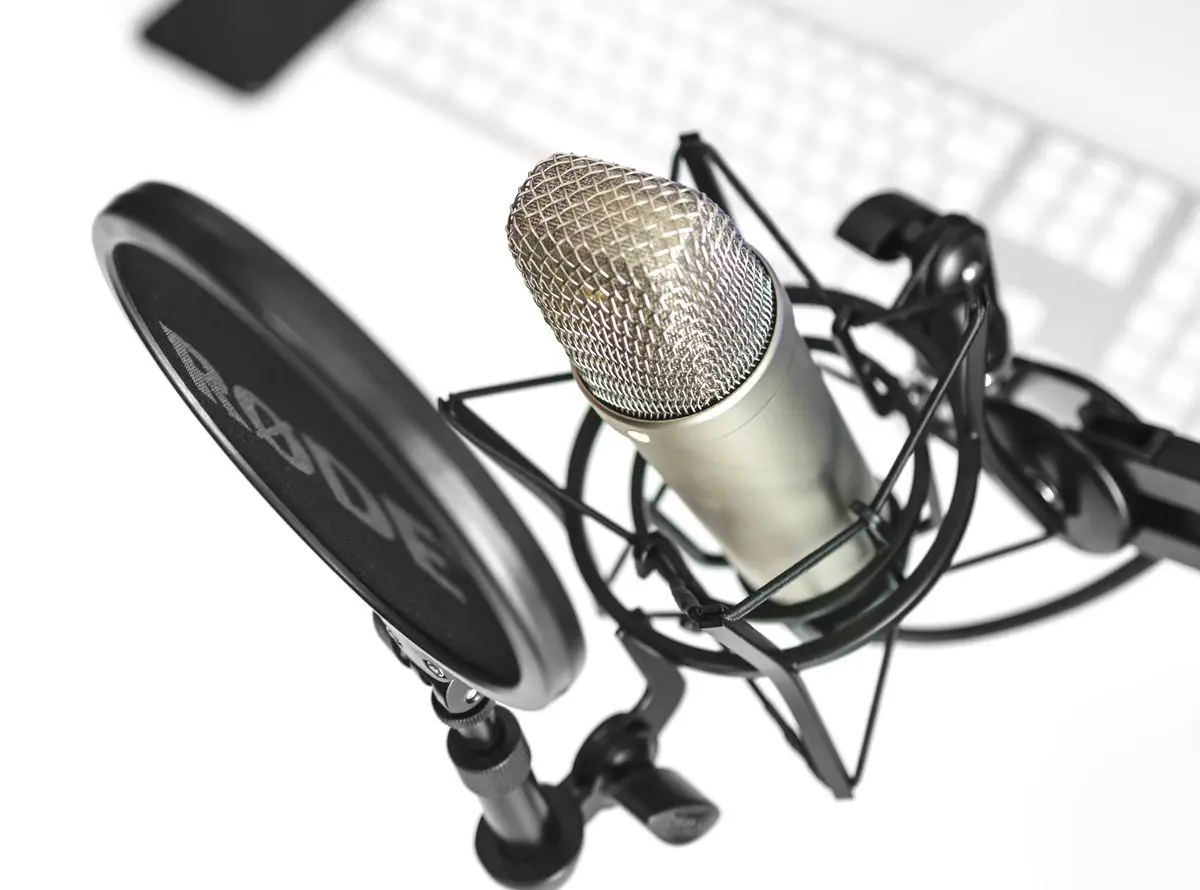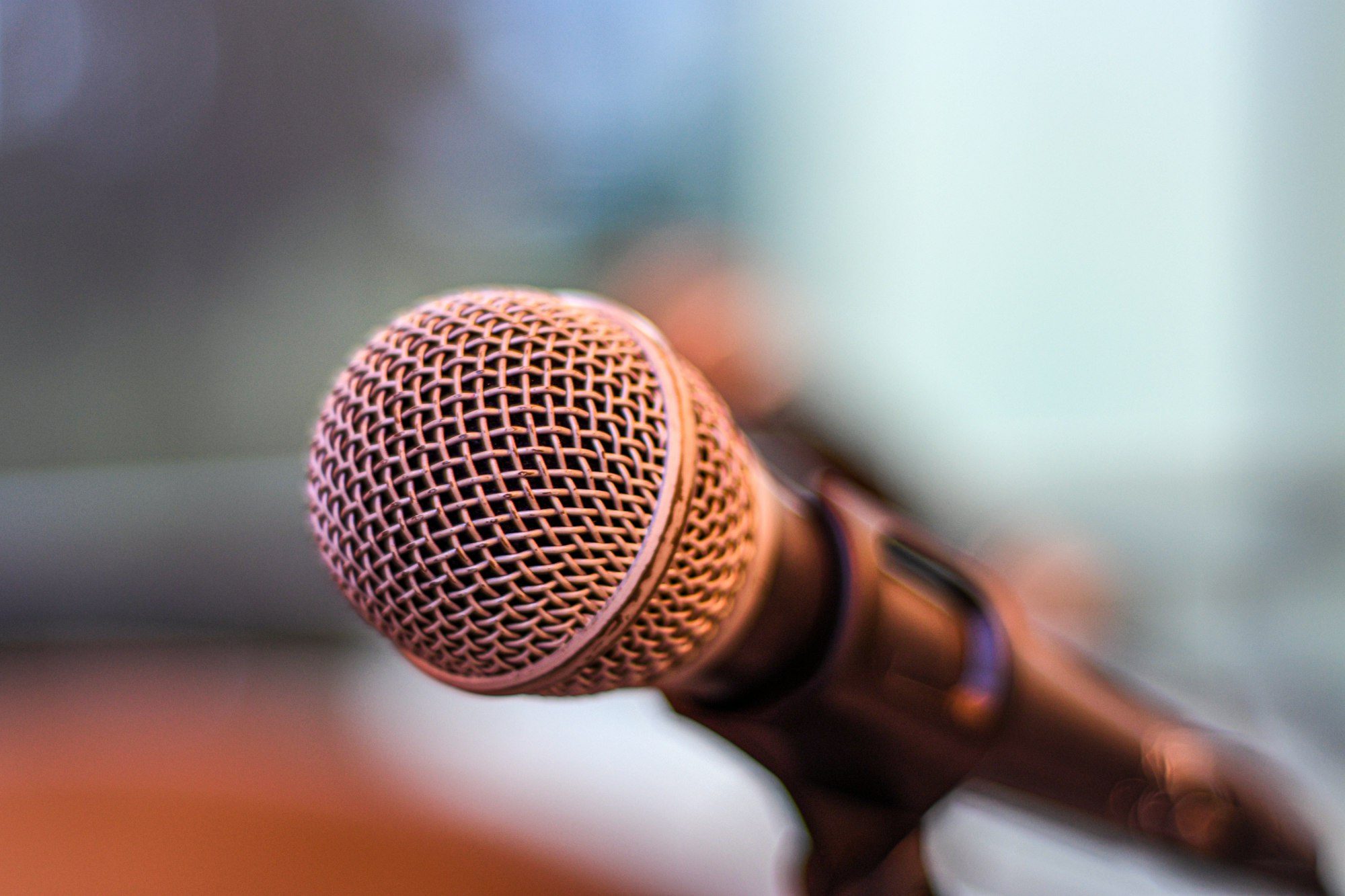What is the Best Microphone for Recording Singing?

Looking for a microphone is hard enough when there are so many options to choose from. Particularly when you need it for a specific purpose such as recording your singing voice. This article offers my advice on which microphone offers the best quality and price for voice recording, as well as what qualities to look for in a recording microphone, so that you can be rest-assured you're buying a good microphone.
The Rode NT1A is a sturdy cardioid condenser microphone, which equates to minimal background noise and superior sensitivity to voice quality. It is priced between $200 and $300, which includes an XLR cable, pop filter, shock mount and carry case. It also has an SPL of 137dB and low self-noise.
I will explain these benefits in more detail below. There are some drawbacks, which I will discuss in this article, but overall it is the best microphone on the market for this price. If you're looking for something cheaper or more simple, I have included some other reliable alternatives you could consider.
Recording Singing with the Rode NT1A
Rode as a Brand
Rode is an Australian brand who supply high-quality yet affordable microphones to over 100 different countries across the world. The thing I like about Rode microphones is that they do well at creating solid products that won't fall apart right out of the box.
They seem to achieve this with fewer buttons and gadgets on microphones. They have a wide range of microphones on offer, with each microphone having a specific purpose. Each microphone does one job and does it well.
Many of their products, including the NT1A microphone, are best-sellers on the market, which is why I am more inclined to trust their brand. It's true that some brands can let you down, but do far Rode have done a pretty good job at satisfying their customers.
The Rode NT1A Model - A Cardioid Condenser Microphone
The Rode NT1A microphone (link to Amazon.com) was released in 2003, and is still one of the best-selling recording microphones on the market. That in itself is a big green flag for me. But here are a few things that confirmed my choice as the overall best recording microphone.
The Price
We hate to admit it, but price does play a huge role in what we purchase. This microphone only costs between $200-$300 (prices vary), which is a big benefit. This is the lowest price for a good quality recording microphone that I've seen, which is why it's my top pick. For comparison, the Shure SM7B (another popular recording microphone) will cost you over $400.
If you're someone who's investing in setting up a dedicated home studio with sound-proofing and the works, then maybe you could consider upgrading to one of the more expensive brands or models to improve on this microphone's shortfalls (which you'll see further down), but for the majority of us wanting to record our singing voice, this microphone is perfect.
The cost of the Rode NT1A also includes an XLR cable, a pop filter, shock mount and carry case. One downside is that you will also need to have an audio interface handy to connect the microphone to your computer. I'll talk about this more further down.
The Benefits of a Condenser Microphone
Condenser microphones are designed to be incredibly sensitive to changes in the voice, making them very good at picking up the quality in your voice. This is why they are so good at voice recording.
Normally, this means that condenser microphones have a higher chance of distorting when your voice becomes too loud. However, the Rode NT1A has an SPL (sound pressure level) of 137dB. This means you can sing up to 137dB without the recording becoming distorted. As a reference, a jackhammer is around 130dB at its source - so unless you're trying to break glass with you're voice, I think you'll be fine.
In regards to sensitivity, this microphone can also detect down to -31.9dB, beyond the threshold of hearing (which is theoretically 0dB). So overall, Rode's technology has taken all the advantages of a condenser microphone and improved all the disadvantages so that it is perfect for recording your singing voice.
The Benefits of a Cardioid Polar Pattern
The polar pattern of the NT1A is a cardioid pattern. You can see all the different polar patterns and their advantages here. But basically, a cardioid pattern allows the microphone to pick up sound from the front and sides, while picking up minimal noise from behind the microphone.
This reduces background noise in your recording and also allows you to angle the microphone to reduce sibilance issues. This is one thing that the NT1A struggles with, which I will talk about later, so it's good that there's a work-around.
Low Self-Noise
The Rode NT1A also has very little self-noise, at only 5dB. This is noise produced by the microphone itself, which has the potential to be heard on the recording. At 5dB, you shouldn't notice any humming or buzzing in the background.
Some Downsides to Consider
A Heavy Microphone
Unfortunately, the NT1A is quite a heavy microphone in comparison to others. This is because the casing is made entirely from metal, making the overall weight 326g (0.7lbs). However, considering that it is a recording microphone, which is not intended to be held, this is not so much an issue.
The main issue is whether you use a cheap stand for it. A cheap stand will eventually break with the weight of this microphone, so it's better to invest in a good stand (which increases the price).
Needs External Power
Being a condenser microphone with electronic components, this model can't produce phantom power. This basically means that you need to have the microphone plugged into an external device in order for it to receive power.
Unfortunately, this does not mean you can just plug it into your computer for power. You need an audio interface, such as the Focusrite Scarlett Solo (link to Amazon.com). An audio interface provides the microphone with the correct amount of power, which can be either 24V or 48V for the NT1A.
Again, this adds an additional cost. However, some audio interfaces come with recording software for your computer, such as Pro Tools. This is software you'll need anyway and you can use the audio interface for voice adjustment during gigs, such as busking as well.
Sibilance Issues
Sibilance issues are those annoying harsh noises on a voice recording, such as t's, p's and s's. This is one reason why Rode has included a pop filter when you purchase the NT1A. The pop filter that comes with the microphone does the job, but you may need to angle the microphone to help reduce these harsh sounds in the recording.
This is probably one of the most annoying things about this microphone, but certainly something that can be worked around. If you wanted to be more technical, you could always buy a higher-quality pop filter to make the recording sound even more professional.
Alternatives to the Rode NT1A for Recording
After reading all about the Rode NT1A, you might be thinking that this is just a bit too far out of your price range, or that there are way too many complicated accessories for your liking. And that's okay. For this reason, here are some alternatives you could consider.
The Shure SM58: A Cheaper Alternative

The Shure SM58 (link to Amazon.com) is my #1 top pick for a beginner microphone. It's a cheap dynamic cardioid microphone that is nearly indestructible, which is why you'll find these babies in schools all around the world.
You're looking at around $100 for a reliable microphone, but being a dynamic microphone, the SM58 isn't as sensitive to quality voice recording. However, it certainly does the job if you're just wanting to start out.
Although this microphone doesn't require external power, you will still need a dedicated cable to plug it into your computer. This is any cable that converts XLR to a computer-friendly input (such as USB or 1/8" aux). One possibility is getting yourself a cheap RP325 cable.
That being said, most computer inputs are not sensitive enough to pick up the microphone's signal, meaning the sound will be too soft or have excess background noise. This can be overcome by using an audio interface, as mentioned above.
For more information on why I recommend the Shure SM58, check out my recommended equipment page here. Otherwise, if you're looking for a more simple setup for recording your singing, you might want to consider a USB microphone.
Audio-Technica AT2020USB+: A Quality USB Microphone

The Audio-Technica AT2020USB+ (link to Amazon.com) comes in at around $150 and has one of the best sounds for a USB recording microphone. This microphone has the capability to offer a cardioid polar pattern to reduce background noise, and has an SPL of 144dB.
It's quite a heavy microphone and the stand that comes with it doesn't handle that very well, but other than that, you don't need anything else with this microphone. You can take the AT2020USB+ out of it's box, plug it into your computer and start recording.
This microphone even has its own gain control and volume control for your headphones. A USB microphone is never going to offer the same sensitivity and quality as the NT1A, but if you're after that simplicity, this is just the right fit and still great quality. For more information of the AT2020USB+, click here.
